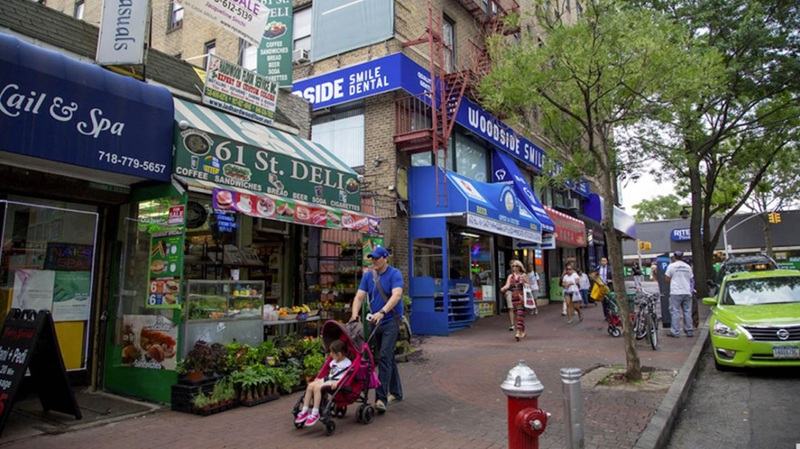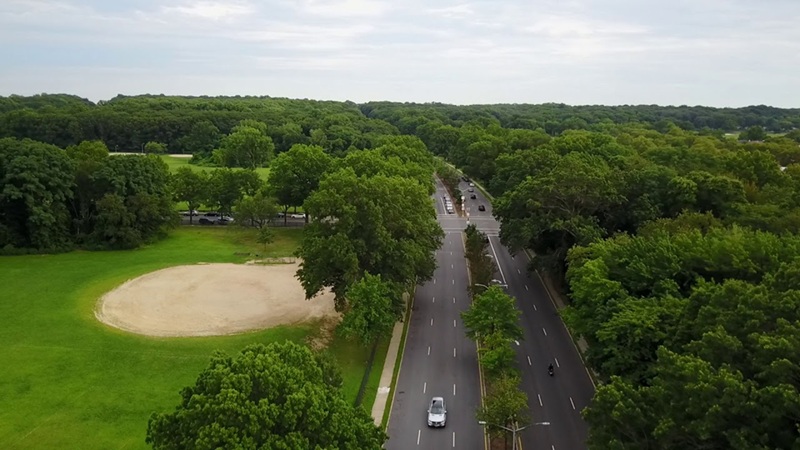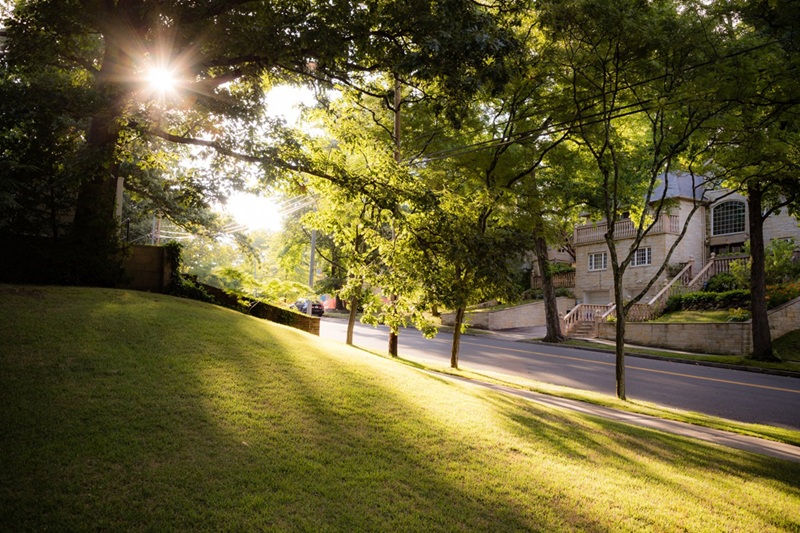
Woodside, located in the western part of Queens, New York, is a neighborhood that combines the best of urban convenience with a sense of community and charm. Known for its cultural diversity, thriving local businesses, and excellent transportation options, Woodside offers a unique living experience for residents and visitors alike. With its close-knit community, central location, and growing development potential, Woodside has become one of the most desirable neighborhoods in Queens.
This article explores the history, residential character, cultural diversity, amenities, and future growth of Woodside, shedding light on what makes this neighborhood such a vibrant and appealing part of New York City.
Overview of Woodside
Woodside is bordered by Astoria to the north, Sunnyside to the west, Jackson Heights to the east, and Elmhurst to the south. It is well-known for its residential character, diverse population, and its accessibility to transportation hubs that make commuting to Manhattan and other parts of Queens seamless. Despite being just a short subway ride from Midtown Manhattan, Woodside retains a small-town feel, with tree-lined streets, family-owned businesses, and a strong sense of community.
The neighborhood is a melting pot of cultures, with immigrant populations from Ireland, Latin America, Asia, and Europe contributing to the area’s vibrant cultural fabric. Its blend of residential housing, commercial establishments, and local parks make it an appealing choice for those seeking a balance of city living and suburban comfort.
Historical Background
Woodside’s history dates back to the 17th century, when it was originally inhabited by the Lenape Native Americans before European settlers arrived. The area was initially farmland, and in the 19th century, it began to develop into a more populated area due to its proximity to the Long Island Rail Road (LIRR) and the expansion of transportation networks.
The neighborhood became part of Queens County when Queens was consolidated into New York City in 1898. As the city’s population grew and industrialized, Woodside transformed from a rural area into a densely populated neighborhood. The development of the subway system in the early 20th century, particularly the 7 train (which connects Woodside to Manhattan), further accelerated the neighborhood’s growth, making it a convenient and desirable location for commuters.
During the mid-20th century, Woodside became a popular destination for working-class families and immigrants, particularly Irish and Italian communities. Over the years, the neighborhood continued to diversify, with new waves of immigration from countries like Mexico, Ecuador, India, and Bangladesh, creating the rich cultural tapestry that defines Woodside today.
Residential Character and Housing Market
Woodside is primarily a residential neighborhood, offering a variety of housing options that cater to different preferences and budgets. The neighborhood’s housing stock is diverse, with a mix of single-family homes, multi-family houses, and low-rise apartment buildings. Many of the homes in Woodside are classic two-family houses, a popular style in Queens, which provides flexibility for both families and renters. There are also several co-ops and condominiums that attract people looking for more modern living spaces.
The residential streets are typically lined with trees, and the neighborhood’s quiet, suburban-like atmosphere is a key feature that distinguishes it from other more densely packed areas of Queens. As a result, Woodside is a popular choice for families and young professionals who are looking for more affordable housing options compared to other neighborhoods in Queens, such as Astoria or Long Island City.
While the housing market in Woodside is more affordable than other parts of Queens, real estate prices have been rising in recent years as the area becomes increasingly attractive to newcomers. This is especially true in areas close to the subway and LIRR stations, which offer easy access to Manhattan. However, compared to neighboring neighborhoods, Woodside still maintains relatively affordable housing prices, making it an ideal location for first-time homebuyers and those looking for more space at a lower cost.
Transportation and Accessibility
Woodside’s central location in Queens makes it one of the most well-connected neighborhoods in the borough, offering easy access to both public transportation and major roadways. The 7 train is a key feature of the neighborhood, running along Roosevelt Avenue and providing a direct connection to Manhattan. Commuters can easily reach Times Square in under 20 minutes, making Woodside an attractive option for professionals working in the city.
In addition to the subway, Woodside is served by the Long Island Rail Road (LIRR), with a station at Woodside, offering direct service to Penn Station in Manhattan and Long Island. This makes Woodside a prime location for those who need fast and convenient access to both the city and the suburbs.
Several bus routes also serve Woodside, including the Q18, Q32, and Q53, which connect the neighborhood to Astoria, Jackson Heights, Flushing, and other parts of Queens.
Woodside’s proximity to major highways like the Brooklyn-Queens Expressway (BQE) and the Long Island Expressway (LIE) also makes it easy for drivers to access Brooklyn, Manhattan, and Long Island.
Cultural Diversity and Community Life
One of the most defining features of Woodside is its cultural diversity. The neighborhood is home to residents from many different backgrounds, which has helped shape the area’s unique character. Irish immigrants were among the first groups to settle in Woodside in large numbers, and their influence can still be seen in local businesses and Irish pubs. Over the years, waves of immigration from countries such as Mexico, Ecuador, India, Bangladesh, and The Philippines have added new layers to the neighborhood’s multicultural identity.
This diversity is reflected in Woodside’s local businesses, including a wide variety of ethnic restaurants, grocery stores, and shops. Whether you’re craving authentic Indian curry, Mexican tacos, or Bangladeshi sweets, you can find a restaurant in Woodside that offers flavors from around the world.
The neighborhood is also home to several cultural institutions and community centers that promote the arts, education, and social services. These include the Woodside Community Center and several local churches and mosques that serve as gathering places for residents.
Additionally, Woodside’s diverse cultural makeup is celebrated through festivals and community events, including parades, food festivals, and cultural fairs that showcase the traditions and cuisines of the different groups that call Woodside home.
Local Amenities and Recreation
Woodside may not be known for its sprawling parks, but it offers plenty of local amenities and nearby recreational spaces for residents to enjoy. The neighborhood is within close proximity to several parks, including Ravenswood Park, Juniper Valley Park, and Flushing Meadows-Corona Park, one of the largest parks in Queens, which is just a short subway ride away.
Residents also benefit from a wide range of services, including local grocery stores, pharmacies, banks, and medical facilities. Roosevelt Avenue, one of Woodside’s main thoroughfares, is lined with businesses that cater to the community’s diverse population, including international markets and small businesses offering everything from home goods to electronics.
Future Development and Growth
Woodside has experienced significant development in recent years, and this trend is expected to continue in the future. The neighborhood’s proximity to public transportation, combined with its relatively affordable housing, makes it an attractive location for developers looking to invest in Queens. New residential buildings, mixed-use developments, and commercial spaces are slowly transforming the area, bringing in more businesses and residents.
At the same time, the neighborhood’s strong community ties and cultural heritage are likely to keep its unique character intact. As Woodside continues to grow, it is expected to become an even more appealing place to live, work, and play, offering an ideal blend of suburban comfort and urban convenience.
Conclusion
Woodside, Queens, offers a dynamic living experience that blends history, culture, and modern convenience. With its affordable housing, excellent transportation options, diverse community, and vibrant local businesses, Woodside remains one of the most attractive and accessible neighborhoods in New York City. Whether you’re looking to raise a family, find a starter home, or simply enjoy a vibrant, multicultural neighborhood, Woodside provides all the amenities and qualities that make it one of Queens’ most desirable places to live.

